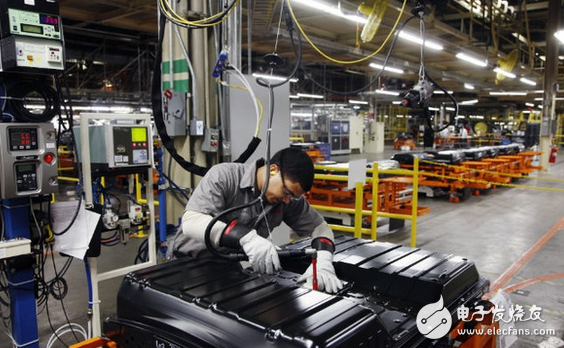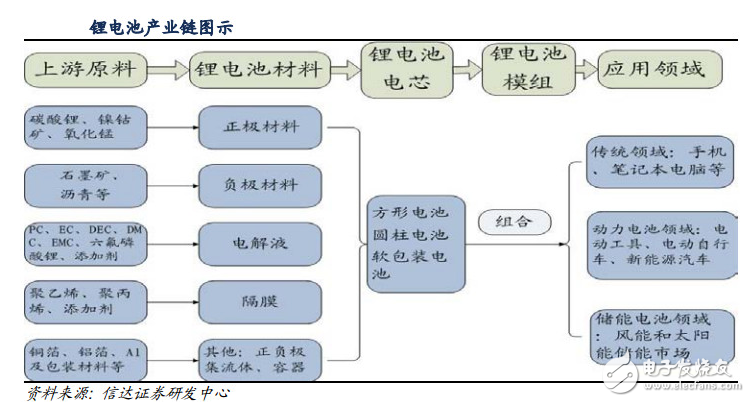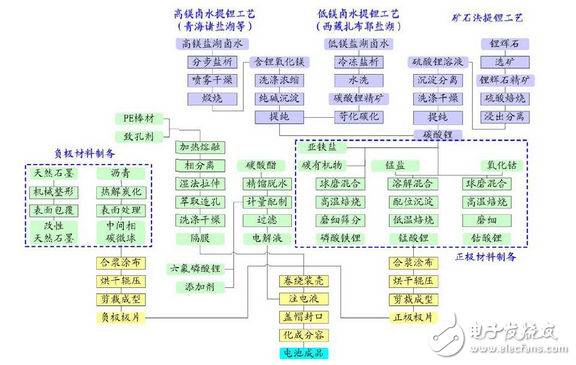In China's manufacturing 2025, the energy density target of the power battery is 350 watt-hours/kg. The number of new energy vehicles corresponding to the new energy vehicles is expected to reach 1 million by 2020, and 2 million by 2030. The important reason behind this is to link the power battery with the new energy revolution, which has provided great development prospects for the power battery industry. So what is a power lithium battery? Du Niang's explanation is that a battery that uses lithium metal or lithium alloy as a negative electrode material and uses a non-aqueous electrolyte solution can be divided into two types: lithium metal batteries and lithium ion batteries. Among them, lithium-ion batteries do not contain metallic lithium, and can be charged, which can greatly satisfy consumer demand. At this point, lithium batteries are gradually being valued by people. Let's first come to the development of lithium batteries: 1. In the 1970s, Exxon's MSWhitTIngham used titanium sulfide as the positive electrode material and lithium metal as the negative electrode material to make the first lithium battery. 2. In 1980, J. Goodenough discovered that lithium cobaltate can be used as a positive electrode material for lithium ion batteries. 3. In 1982, RRAgarwal and JRselman of the Illinois Institute of Technology discovered that lithium ions have the property of being embedded in graphite. This process is fast and reversible. At the same time, the lithium battery made of lithium metal has attracted much attention, so people tried to make a rechargeable battery by utilizing the characteristics of lithium ion embedded graphite. The first available lithium ion graphite electrode was successfully produced by Bell Labs. 4. In 1983, M. Thackeray and J. Goodenough discovered that manganese spinel is an excellent cathode material with low cost, stability and excellent conductivity and lithium guiding properties. The decomposition temperature is high, and the oxidation is much lower than that of lithium cobaltate. Even if short circuit or overcharge occurs, the risk of burning and explosion can be avoided. 5. In 1989, A. Manthiram and J. Goodenough discovered that a positive electrode with a polymeric anion would produce a higher voltage. 6. In 1991, Sony released the first commercial lithium-ion battery. Subsequently, lithium-ion batteries revolutionized the face of consumer electronics. 7. In 1996, Padhi and Goodenough discovered that phosphates with olivine structure, such as lithium iron phosphate, are superior to conventional cathode materials and have become the mainstream cathode materials. Since 1998, the industry has also called lithium-ion batteries lithium batteries, but these two batteries are different. Lithium-ion batteries have become the mainstream in the industry. Since it has become the mainstream, what is the industrial chain of lithium batteries? It is not difficult to find that the upstream of the lithium battery is the mineral resource required for the lithium battery material, and the midstream is the manufacturer of the lithium battery, including the production of the cathode material, the anode material, the electrolyte, the separator, the conductive agent and the binder, and the downstream is mainly lithium battery. The supporting application field has been widely used in consumer electronics, electric vehicles and industrial energy storage. In order to analyze the entire industrial chain of the lithium battery industry, let's take a look at the lithium battery production process: According to industry sources, the consumption of three raw materials for an electric vehicle: 45 kg of lithium carbonate, 11 kg of cobalt, and 50 kg of graphite. Taking Tesla ModelS as an example, the content of three main metal elements in electric vehicles is measured. At the same time, based on the annual sales increase of 1 million electric vehicles, the consumption sensitivity analysis of raw materials can be used to obtain lithium carbonate consumption. The increase is 45,000 tons, the current consumption is 140,000 tons/year; the cobalt consumption is increased by 11,000 tons, the current consumption is 80,000 tons/year; the graphite consumption is increased by 50,000 tons, and the consumption is huge but there is no accurate figure. UCOAX Custom Made Link Cable Compatible for Oculus Quest 2, Fast Charging & PC Data Transfer USB C 3.2 Gen1 Cable for VR Headset and Gaming PC 16FT(5M) Virtual Reality Link Cable,Oculus 2 Cable,Vr To Pc Cable,Virtual Reality Link Cable Device UCOAX , https://www.ucoax.com


Compatible for Oculus Quest 2: KRX link cable has perfect compatibility for oculus quest 2, so you can enjoy your gaming time happily
Flexiable lengths of link cables for you to choose. Choose the right one according to your needs
High-speed transmission & Fast Charging: The 3A current allows you to charge quickly while playing, maintaining stable and high-speed data transmission
USB C cable version: KRX USB C cable compatible with usb 3.0/3.1 gen1/3.2 gen1
90 Degree angle metal head design: The 90-degree USB C design makes you more stable and not easily damaged when playing
July 25, 2024